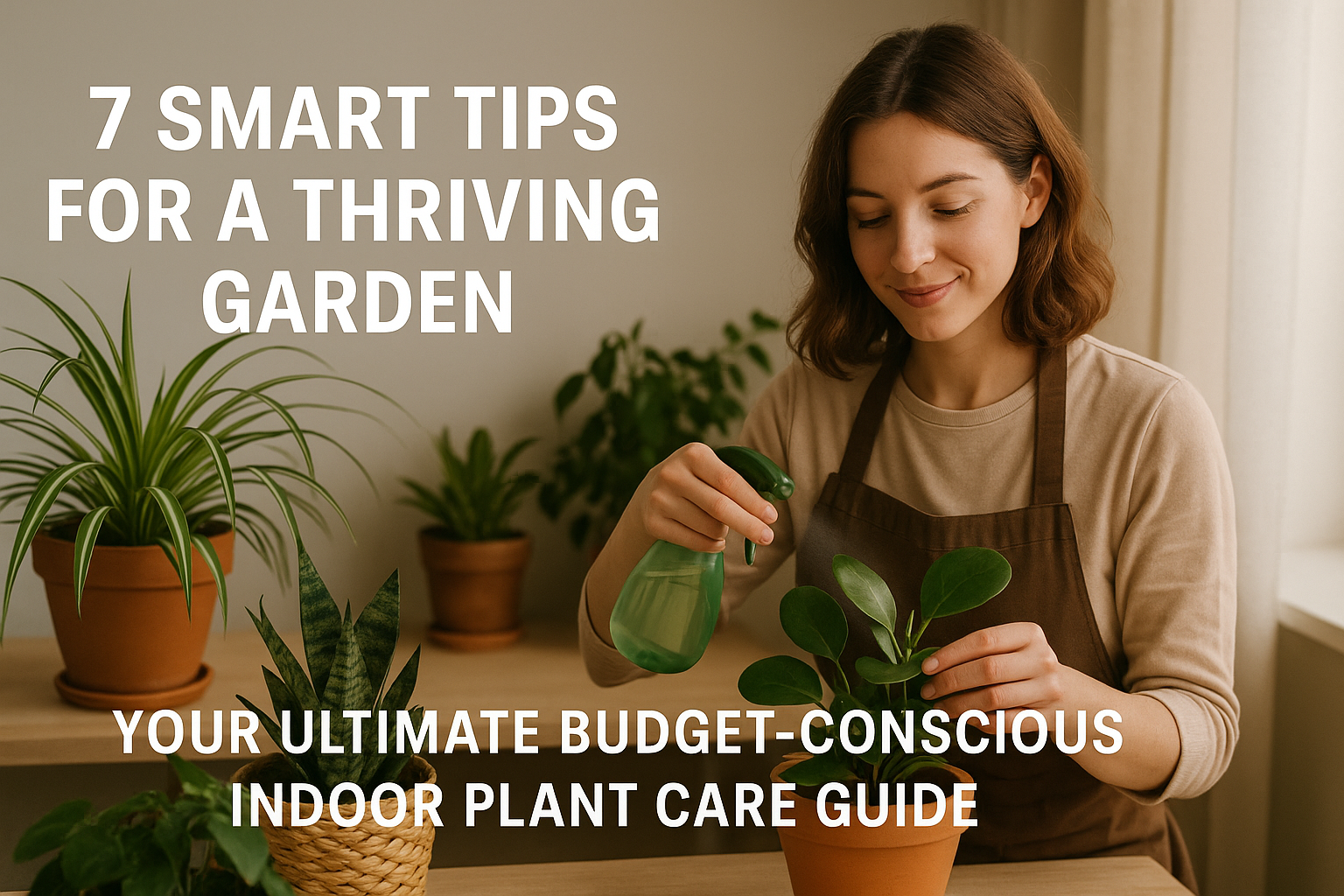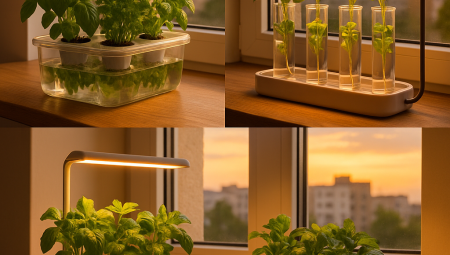Cultivating Greenery Without Breaking the Bank: The Smart Way to Nurture Your Indoor Plants
Dreaming of a lush, vibrant indoor jungle but worried about the cost? You’re not alone! Many aspiring plant parents believe that beautiful houseplants require a hefty investment in fancy pots, expensive fertilizers, and high-tech gadgets. The truth is, cultivating a thriving indoor garden on a shoestring budget is entirely possible. This comprehensive budget-conscious indoor plant care guide is designed for everyday plant enthusiasts, students, young professionals, and anyone looking to bring the joy of nature indoors without emptying their wallet. We’ll show you how to maximize your plant’s potential using smart, economical strategies, ensuring your green companions flourish without unnecessary expense.
Why Embrace Budget-Conscious Indoor Plant Care?
The appeal of indoor plants is undeniable. They purify the air, boost mood, reduce stress, and add aesthetic appeal to any space. Yet, the perceived cost can often be a barrier. However, adopting a budget-conscious indoor plant care approach isn’t just about saving money; it’s about smart, sustainable gardening. By learning to propagate, repurpose, and wisely manage resources, you not only save cash but also gain a deeper understanding of your plants’ needs. According to a 2024 survey by the National Gardening Association, 65% of new plant owners are actively seeking cost-effective methods for plant acquisition and maintenance, highlighting a significant market for accessible plant care information.
Getting Started: Affordable Plant Choices
The first step in budget-conscious indoor plant care is selecting the right plants. Some plants are inherently more affordable to acquire and maintain due to their resilience and ease of propagation.
Top Economical Indoor Plants
- Pothos (Epipremnum aureum): Extremely forgiving, easy to propagate from cuttings, and tolerant of various light conditions. Cuttings can often be found for free from friends or online plant communities.
- Spider Plant (Chlorophytum comosum): Famous for producing “spiderettes” that are incredibly easy to root, making them perfect for sharing and expanding your collection for free.
- Snake Plant (Sansevieria trifasciata): Incredibly hardy, requiring minimal water and tolerant of low light. They’re slow growers but worth the initial small investment due to their longevity and air-purifying qualities.
- ZZ Plant (Zamioculcas zamiifolia): Another low-maintenance superstar, the ZZ plant thrives on neglect and can go weeks without water. Its durability makes it a cost-effective choice in the long run.
- Peace Lily (Spathiphyllum): While slightly more demanding than the previous options, peace lilies are excellent air purifiers and relatively inexpensive to buy. They communicate their needs clearly (drooping leaves when thirsty), making care straightforward.
Essential Budget-Conscious Indoor Plant Care Strategies
Once you have your plants, the real work of budget-conscious indoor plant care begins. These strategies will help you maintain healthy plants without overspending.
1. Master the Art of Propagation
Propagation is arguably the most impactful way to expand your plant collection for free. Many common houseplants can be propagated from stem cuttings, leaf cuttings, or by division.
Stem Cuttings (Pothos, Philodendron, Spider Plant)
Simply cut a stem just below a node (where a leaf attaches), remove the bottom leaves, and place it in water or moist soil. Within weeks, roots will develop. This method turns one plant into many without any cost.
Leaf Cuttings (Snake Plant, Succulents)
For some plants, a single leaf can be enough. Cut a healthy leaf, let the cut end callus over for a day or two, then place it in well-draining soil. This method takes longer but is incredibly satisfying.
Division (Peace Lily, Ferns)
As your plant grows, it may produce multiple smaller plants or “pups” from its base. Gently separate these during repotting, ensuring each division has some roots, and you’ll have instant new plants.
2. Repurpose Household Items for Planters and Tools
Forget expensive ceramic pots. Your home is likely full of items that can be repurposed for your plants, aligning perfectly with budget-conscious indoor plant care.
- DIY Planters: Old coffee cans, plastic food containers (with drainage holes added), glass jars, or even woven baskets lined with plastic can make excellent, unique planters.
- Drainage Solutions: Broken pottery, pebbles, or even old wine corks can be used at the bottom of pots to ensure proper drainage, preventing root rot.
- Watering Tools: An old plastic bottle with holes poked in the cap can serve as a makeshift watering can.
- Support Structures: Use bamboo skewers, old chopsticks, or repurposed branches as plant stakes for climbing plants.
3. Create Your Own Potting Mix
Commercial potting mixes can be expensive, especially if you have many plants. Making your own is a fantastic budget-conscious indoor plant care hack.
A basic, versatile potting mix can be made from:
- Compost or Garden Soil (if sterilized): Provides nutrients. Aim for about 50%.
- Perlite or Vermiculite: Improves drainage and aeration. Around 20-30%. Look for these in bulk at garden centers for better value.
- Coco Coir or Peat Moss: Retains moisture. Around 20-30%. Coco coir is a more sustainable choice.
You can often find free compost from local community gardens or make your own from kitchen scraps.
4. Smart Watering Techniques
Overwatering is a common killer of indoor plants, wasting water and potentially money on replacement plants. Budget-conscious indoor plant care emphasizes efficient watering.
- Feel the Soil: Don’t water on a schedule. Instead, stick your finger about an inch or two into the soil. Water only when the soil feels dry.
- Bottom Watering: Place your potted plant in a tray of water for 20-30 minutes. The plant will absorb water from the bottom up, ensuring thorough hydration and preventing overwatering. This method is highly efficient and minimizes water waste.
- Rainwater Collection: If you have access to a balcony or outdoor space, collect rainwater in a bucket. Rainwater is excellent for plants as it’s naturally soft and free of chlorine and other chemicals found in tap water.
5. DIY Fertilizers and Pest Control
Commercial fertilizers and pesticides can be pricey. Many natural, inexpensive alternatives work just as well for budget-conscious indoor plant care.
- Coffee Grounds: Sprinkle used coffee grounds directly onto the soil. They provide nitrogen and can slightly acidify the soil, beneficial for many plants.
- Banana Peels: Chop up banana peels and bury them in the soil or soak them in water for a few days to create a nutrient-rich “banana tea” for potassium.
- Eggshells: Crush dried eggshells and mix them into the soil for a calcium boost.
- Dish Soap Spray for Pests: Mix a few drops of mild dish soap with water in a spray bottle. This natural solution is effective against common pests like aphids and spider mites. A 2023 study by Plant Pathology Journal indicated that horticultural oil and insecticidal soaps are highly effective and safer alternatives to synthetic pesticides for common houseplant pests.
6. Optimize Natural Light
Light is essential, and maximizing natural light costs nothing! Position your plants strategically to meet their light requirements. Rotate them regularly to ensure even growth. Understanding your home’s light zones can save you from buying expensive grow lights unless absolutely necessary. For example, a south-facing window typically offers the most intense light, while a north-facing window provides softer, indirect light.
7. Learn from Your Plants (and Other Plant Parents!)
The best resource in budget-conscious indoor plant care is often free: knowledge.
- Observe Your Plants: Pay attention to their leaves (yellowing, drooping, browning) and growth patterns. They will tell you what they need.
- Online Communities: Join Facebook groups, Reddit forums (like r/houseplants or r/plantclinic), or local plant swap events. These are fantastic resources for free advice, plant cuttings, and shared experiences.
Quick Answers
What is the cheapest way to get new indoor plants?
The cheapest way to get new indoor plants is by propagating from cuttings, either from your existing plants or by swapping with friends. Many common houseplants like Pothos, Spider Plants, and Snake Plants are incredibly easy to root in water or soil, allowing you to expand your collection for free without any initial purchase.
How can I make my own budget-friendly potting mix at home?
You can make your own budget-friendly potting mix by combining sterilized garden soil or compost (around 50%), perlite or vermiculite for drainage (20-30%), and coco coir or peat moss for moisture retention (20-30%). This mix provides essential nutrients and aeration at a fraction of the cost of commercial options.
Pro Tips for Next-Level Budget Plant Care
- Befriend Local Nurseries: Sometimes, nurseries discard plants that are slightly damaged or overstocked. Politely ask if they have any “ugly ducklings” or plants they’re willing to give away or sell cheaply.
- Utilize Public Spaces: Keep an eye out for fallen leaves or small cuttings in public parks or gardens (where permitted). Always be respectful and only take what’s clearly waste.
- Master Dormancy Care: Understand how your plants behave during dormant periods (often winter). Reducing water and fertilizer during these times saves resources and prevents root rot.
- DIY Pest Traps: For fruit flies or gnats, use a small bowl of apple cider vinegar with a drop of dish soap. It’s a cheap and effective trap.
- Grow from Seed: While slower, growing certain plants from seed (e.g., herbs, some succulents) is incredibly inexpensive.
- Invest in a Good Watering Can (Long-Term): While repurposing is great, a good quality watering can with a long spout helps with precise watering, reducing spills and wasted water over time.
Frequently Asked Questions (FAQ)
What are common mistakes in budget-conscious indoor plant care?
Common mistakes include overwatering, using unsterilized garden soil that introduces pests, neglecting to research a plant’s specific needs (leading to premature plant death), and constantly buying new plants instead of propagating existing ones. Lack of proper drainage is another frequent issue, causing root rot.
How often should I fertilize my indoor plants on a budget?
For budget-conscious indoor plant care, you typically don’t need to fertilize as often as commercial guidelines suggest. Most houseplants only need fertilizing during their active growing season (spring and summer), usually once a month or even every two months with diluted DIY solutions. In fall and winter, plants are often dormant and do not require additional nutrients.
Can I use tap water for my indoor plants?
Yes, you can generally use tap water for your indoor plants. However, if your tap water is heavily chlorinated, it’s beneficial to let it sit out in an open container for 24-48 hours before watering. This allows the chlorine to dissipate. Some sensitive plants, like Marantas or Calatheas, might prefer filtered or rainwater due to their sensitivity to certain chemicals in tap water.
Cultivate Your Green Oasis, Affordably
Building a beautiful indoor garden doesn’t have to be an expensive hobby. By embracing the principles of budget-conscious indoor plant care, you can transform your living space into a thriving green sanctuary. From smart plant choices and clever propagation techniques to DIY potting mixes and natural pest control, every step helps you save money while fostering a deeper connection with your plants. So go ahead, get your hands dirty, and watch your budget-friendly indoor jungle flourish!
What are your favorite money-saving hacks for indoor plant care? Share your wisdom in the comments below and help other plant parents grow their green spaces on a budget!



